| Heading south from Chinle
we were still in the wide open spaces, Mountains are always in the distance.
These bluffs are not particularly high because there is no snow on top. | 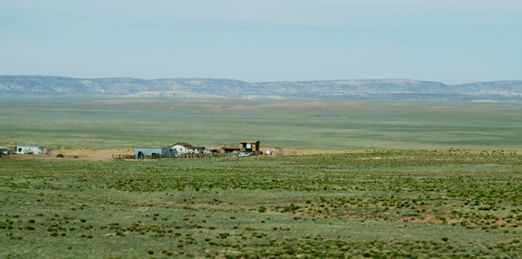 |
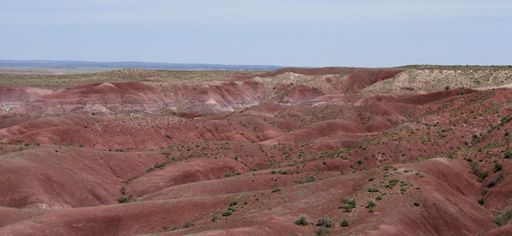 |
So we came to the Painted Desert National Park. The land is coloured like
this as far as the eye can see. Geologically it is the Chinle formation and
it extends from here in Arizona about 500 miles to the north west. |
| Dinosaurs once roamed the
earth in this area but today we only have lizards. This collared lizard is
the largest reptile in the park. They are very quick. | 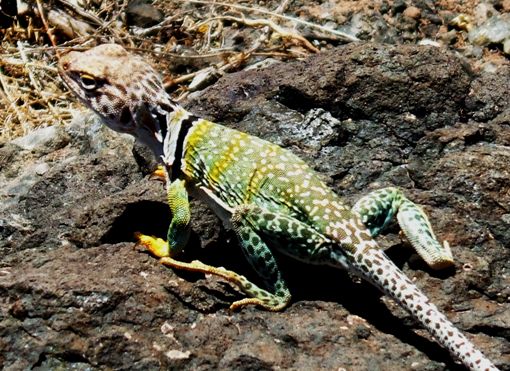 |
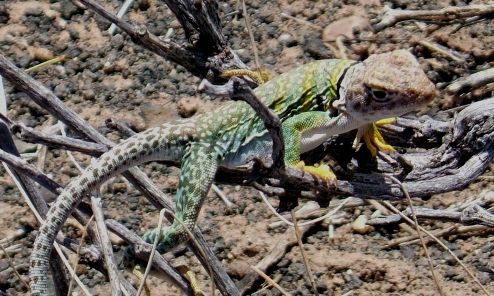 |
The body is only about 4 inches long and the tail twice that. To us he
seemed a bright green, but the intense sun does tend to wash the colours
out. |
| Just inside the park is
the Painted Desert Inn. Now a museum, it was built by Fred Harvey when the
Santa Fe railroad passed close by. He gained the concessions for the
railroad and a number of the National Parks and so he helped start the
tourist industry in the west. His company is now called Xanterra and retains
the concessions to this day. | 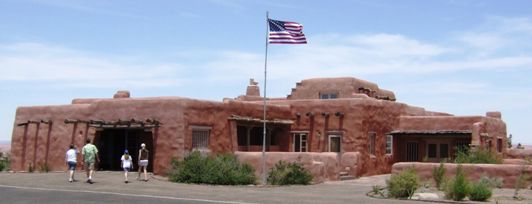 |
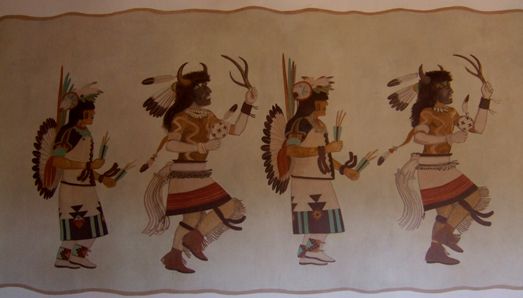 |
Inside are a number of wall paintings and murals by Fred Kabotie, a Hopi
artist of some renown. |
| This mural is famous and
is called the 'Salt Lake Mural'. It tells the story of the Hopi people who
travelled up to the Salt Lake in Utah to collect salt. | 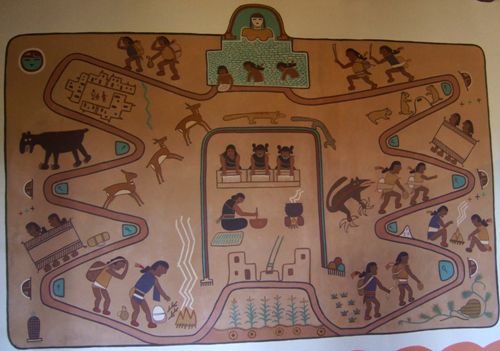 |
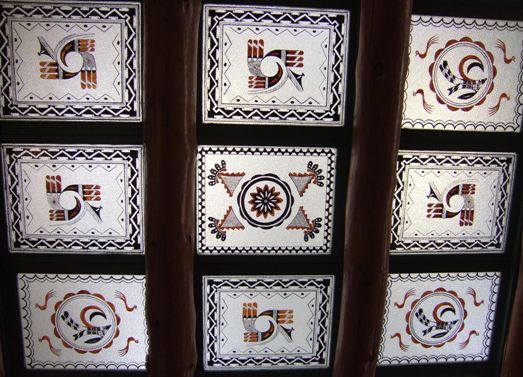 |
In the ceiling are these wonderful glass panels. The inn was extensively
rebuilt in the 1930s by the Civilian Conservation Corps to stop the walls
collapsing. It was built without foundations and the Chinle formation has a
lot of clay. We our familiar with these sorts of problems. |
| The original building was
built of petrified wood, and although the walls are now plastered to give
the look of adobe, the door jambs still show the petrified wood collected
from just down the road in the days before it was illegal to take it away. | 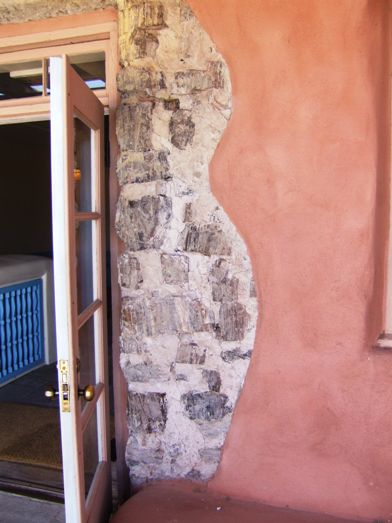 |
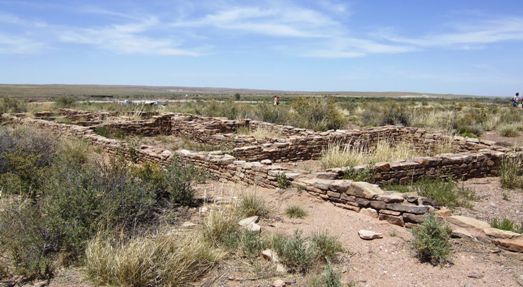 |
There are the remains of settlements in the area from the period when the
Ancestral Puebloans lived on the mesa tops rather than in the cliffs. Some
of these communities were quite large. Perhaps the climate wasn't as hot
then as it is now. It is thought about 18 families lived here. They left
about 1500 AD and are believed to be the ancestors of the modern Hopi. |
| The scale of this
formation is enormous. This type of broken terrain is known as Badlands
because it is very difficult to traverse and it has no farming value. There
are several examples in the USA such as here and up in South Dakota. | 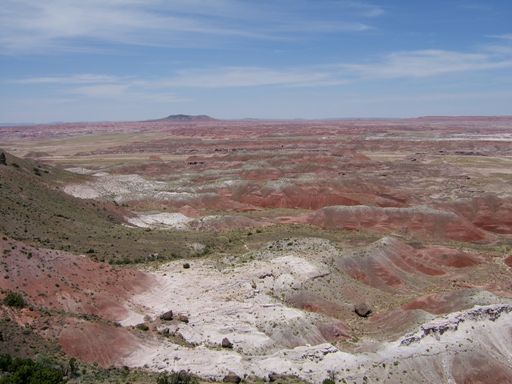 |
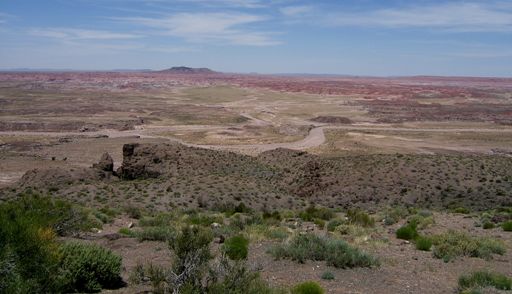 |
You can understand how people here might have believed the earth was flat,
and also why the white man allowed the Indians to live here. Subsistence is
barely achievable if at all. But it is beautiful..... |
| The road through the
Painted Desert crosses part of the old Route 66 (Chicago to LA). This
ancient rusting auto (though it is not rusting that fast because of the very
low rainfall here) and a few other car parts surrounded a sign with
information on the route. | 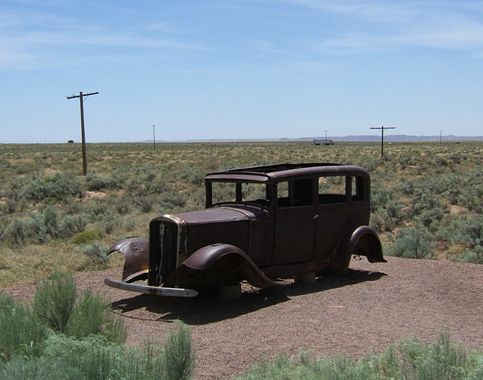 |
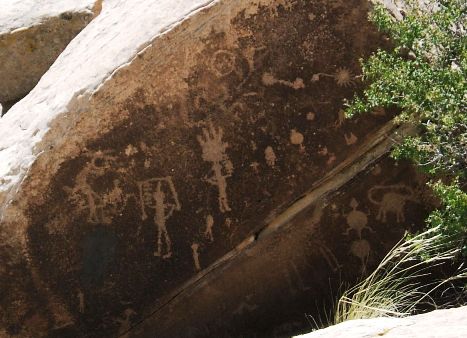 |
Since the area was populated in the past, we were not surprised to find
petroglyphs. These are in an area known as Newspaper Rock. |
| And the reason becomes
obvious when you observe this rock which has hundreds of symbols on it. They
can be quite easy to miss until you get used to what you are looking for,
then you find them everywhere. | 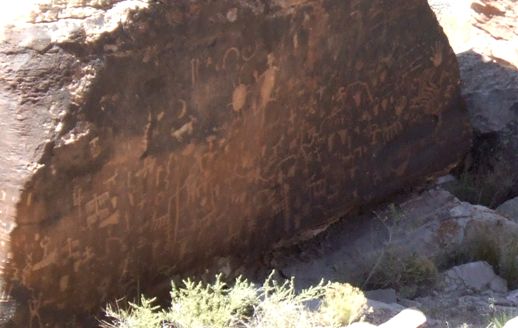 |
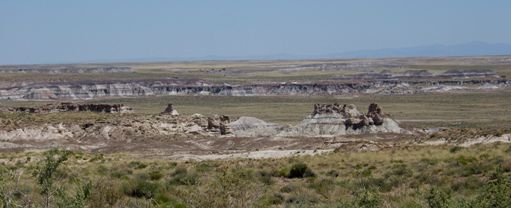 |
The sandstone clay formations are not always red. Some strata are white or
grey, and sometimes quite blue, the result of various minerals being
deposited at different times. But there are still those vistas...... |
| Next door to the Painted
Desert is the Petrified Forest. Here the wood has been completely replaced
by minerals and is now mainly different types of quartz, as hard as stone.
This whole trunk across a dry streambed is known as Agate Rock. Pillars and
now a concrete beam support it and you are no longer allowed to walk on it.
It will eventually crack. | 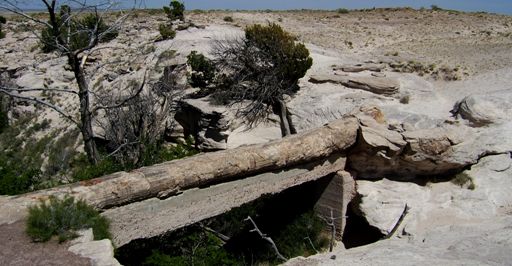 |
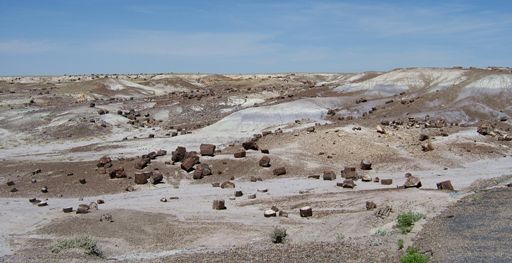 |
Then it will break into sections as at the Crystal Forest. This used to be
covered with petrified wood. But because of its gem like qualities it was
hauled off in car loads in the early 1900s to be used for building,
furniture and just display. Even today, when it is a federal offense to
remove even a tiny part, the rangers reckon they lose a ton a month. |
| It is very attractive
although removing a piece this size might take some doing. | 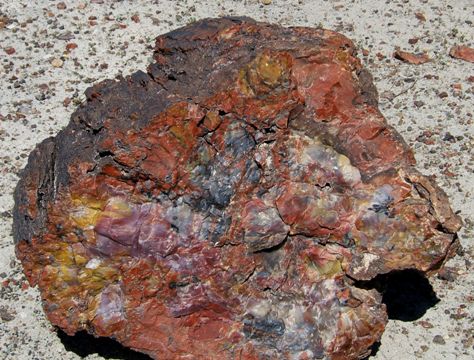 |
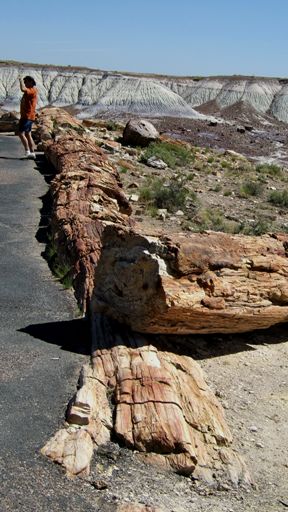 |
The trees lay where they fell and over the eons fractured into short
lengths. There are still examples of large whole trunks, in pieces but still
in place. |
| This is at an area off
the main road to one side called Blue Mesa. The red colouration is much less
and the blue clays predominate but the same sort of structures are formed. | 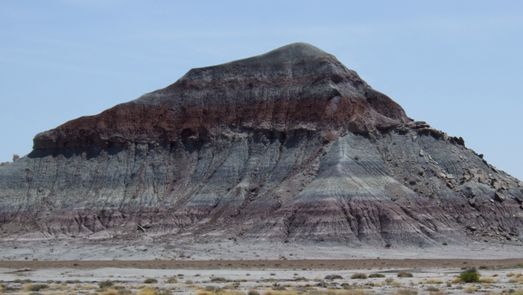 |
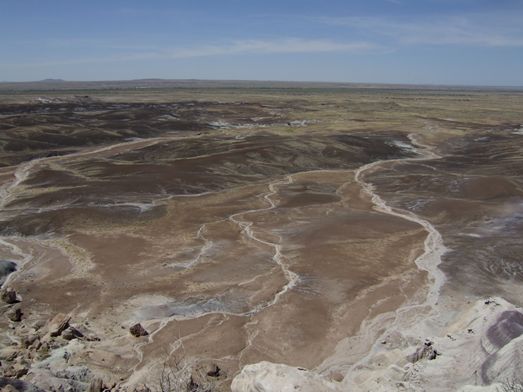 |
The area shows a clear example of dendritic drainage - the small washes
which drain the water when it does rain look like the roots of a tree. It is
constantly changing and reshaping the soils. This is a tiny view of what is
a 180 degree panorama stretching out to the horizon. |
| The alternating layers of
sedimentary rocks are shown most clearly here. There were a couple of JCBs
in this area but generally there is no evidence of any use being made of
this land. | 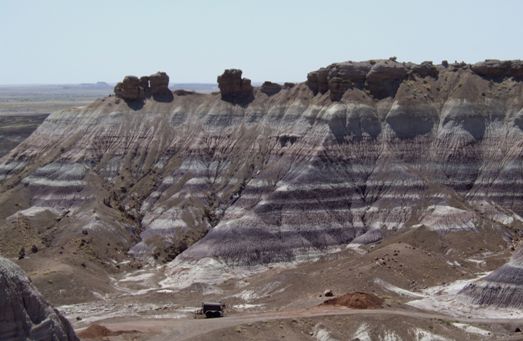 |
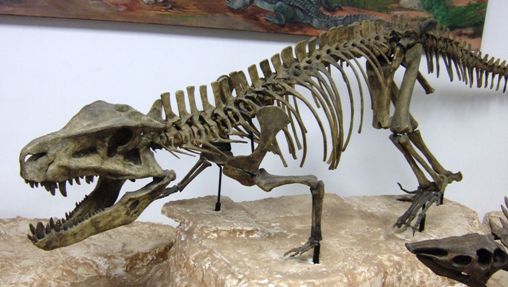 |
At the southern end of the Petrified Forest is a museum which has some
skeletons of dinosaurs which used to live here and fossils which have been
found. This is postosuchus kirkpatrickii, a rauisuchian and a leading
predator of the late Triassic period |
| Outside the museum is
another area of petrified logs, including some very large examples. | 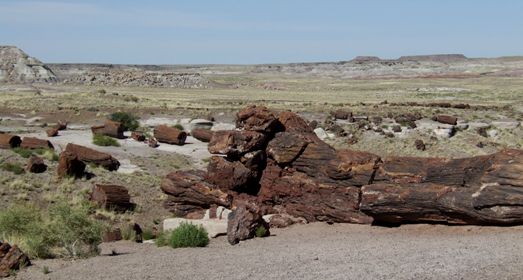 |
|